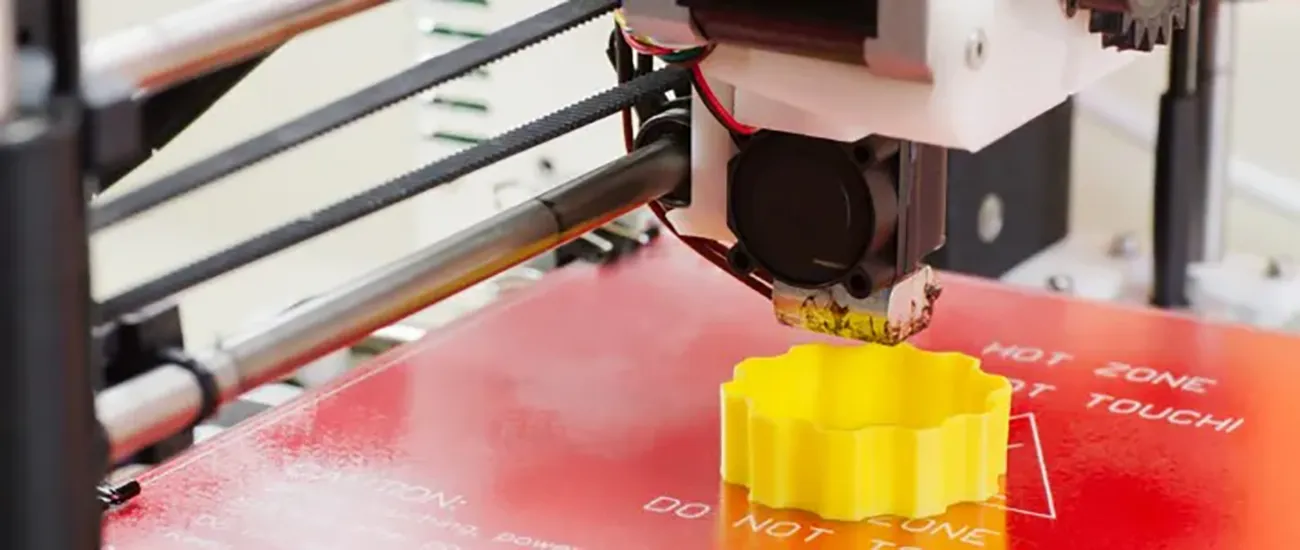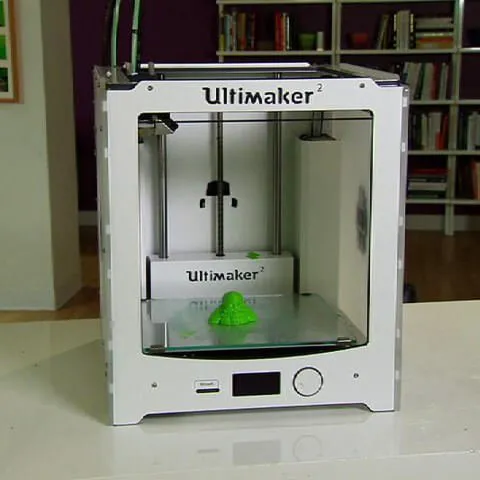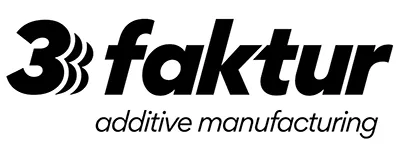
The term “3D printing” refers to additive manufacturing methods in which a machine builds an object layer by layer. No tools are required for this process. The prerequisite for performing a 3D print is the presence of a digital 3D model. You can obtain a 3D model through 3D scanning or by 3D modeling using 3D modeling software. This model is sliced into numerous layers by software. The printer then builds the model layer by layer. The materials used for this process depend on the specific technique applied. These can be substances without a fixed form (liquids, powders) or substances with a neutral form such as tapes or wires (filament). Physical or chemical curing or melting processes are executed by the 3D printer to shape the object. Post-processing is often required, which can vary in complexity depending on the printing method used and the intended use. (e.g., painting, cleaning, removal of support structures)
What Does a 3D Printer Do?
3D printers serve as a medium to transform the data of a digital 3D model (often referred to as a CAD model) into reality. The printer materializes each layer of the model, which has been “dissected” by the software. This can work similar to an inkjet printer (PolyJet, FDM), where material is applied to a build platform from a nozzle. Alternatively, it can involve a melting process, where the layers are melted into a bed of metal or plastic powder. The unused material remains in powder form and can be reused after printing. Other methods include laser sintering, stereolithography, or the 3D powder printing process.
During 3D printing, the object is materialized layer by layer until the digital model is completely transformed into the tangible world. We have summarized the most important methods for you in separate articles here.
Sie sehen gerade einen Platzhalterinhalt von Standard. Um auf den eigentlichen Inhalt zuzugreifen, klicken Sie auf den Button unten. Bitte beachten Sie, dass dabei Daten an Drittanbieter weitergegeben werden.
Weitere InformationenSource: https://www.youtube.com/watch?v=ddtJVww8Zvw&t=13s
Print process example using an FDM printer.
A Brief History of 3D Printing
In principle, the development of the field of 3D printing can be traced back to Chuck Hull, who invented the stereolithography 3D printing process in 1983. 3D printing has established itself as an alternative to subtractive manufacturing methods such as cutting, milling, grinding, or casting. More powerful software and improved computing technology now allow complex geometries to be calculated and digitally modeled quickly. Advancing technological developments have made compact, so-called desktop 3D printers small and low-emission enough to find their way into private households and offices. These “home printers” typically use the FDM method. In addition to the effort to make 3D printers increasingly compact, there is a trend to increase the available build volume (the area in which printing can occur). This goes so far that the WASP team from Italy is using their enormous 3D printer (BigDelta) to print simple houses.
By now, an industry has developed worldwide around 3D printing. With the production of printers and services related to 3D printing, a market has emerged that is growing rapidly and generates billions of euros in revenue each year.


Sie sehen gerade einen Platzhalterinhalt von Standard. Um auf den eigentlichen Inhalt zuzugreifen, klicken Sie auf den Button unten. Bitte beachten Sie, dass dabei Daten an Drittanbieter weitergegeben werden.
Weitere InformationenSource: https://www.youtube.com/watch?v=yQ3bosKifkE
A short video of the BigDelta 3D printer by WASP for printing buildings.
Outlook
Some futurists see 3D printing as the beginning of a de-globalization process and the start of re-regionalization. Whether these predictions will come true remains to be seen in the future. In any case, 3D printing has revolutionized prototyping by allowing prototypes to be created at unprecedented speeds. In product development, many new possibilities arise because almost all shapes are now possible, and less consideration needs to be given to the manufacturing process of the workpiece. 3D printers have significant advantages in the area of individual products. Nowadays, customers can get personalized designs for jewelry, gadgets, and even food. In the medical field, 3D printing has also brought about innovations. For example, hip joints can now be precisely tailored to the patient, eliminating the need to settle for semi-fitting standard models. The next step is to make organ donation obsolete by printing human tissue from 3D printers.
What else we can produce with 3D printers in the future is open. The imagination (almost) knows no bounds. If you have heard of an interesting project related to 3D printing, we would be delighted to receive a comment on the topic.

About 3Faktur: 3Faktur specializes in 3D printing, rapid prototyping, and rapid manufacturing. We utilize HP’s Multi Jet Fusion technology and offer various materials for prototyping and series production. If you have any questions about your project, feel free to contact us.
